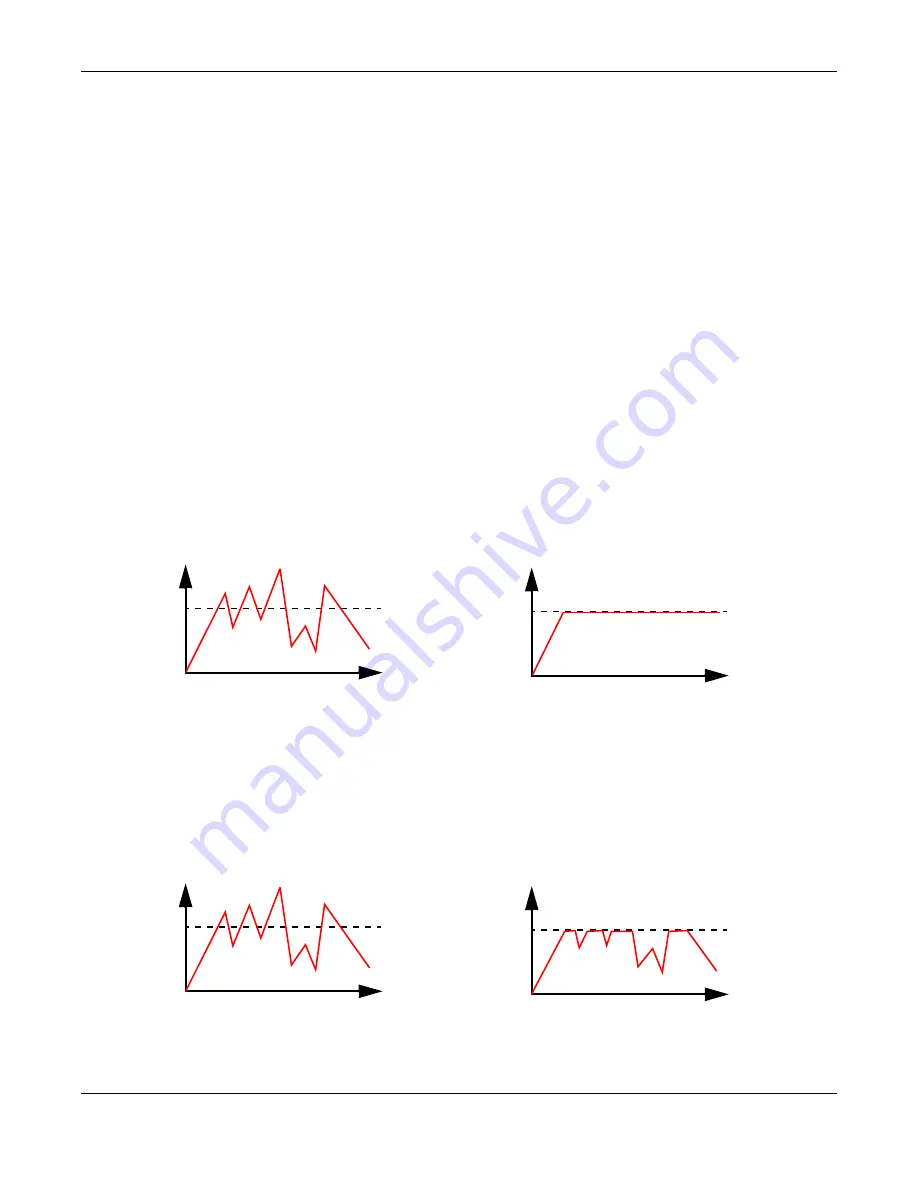
Chapter 10 Quality of Service (QoS)
EX5501-B0 / AX7501-B0 / PX7501-B0 User’s Guide
153
QoS versus CoS
QoS is used to prioritize source-to-destination traffic flows. All packets in the same flow are given the
same priority. CoS (class of service) is a way of managing traffic in a network by grouping similar types of
traffic together and treating each type as a class. You can use CoS to give different priorities to different
packet types.
CoS technologies include IEEE 802.1p layer 2 tagging and DiffServ (Differentiated Services or DS). IEEE
802.1p tagging makes use of three bits in the packet header, while DiffServ is a new protocol and
defines a new DS field, which replaces the eight-bit ToS (Type of Service) field in the IP header.
Tagging and Marking
In a QoS class, you can configure whether to add or change the DSCP (DiffServ Code Point) value, IEEE
802.1p priority level and VLAN ID number in a matched packet. When the packet passes through a
compatible network, the networking device, such as a backbone switch, can provide specific
treatment or service based on the tag or marker.
Traffic Shaping
Bursty traffic may cause network congestion. Traffic shaping regulates packets to be transmitted with a
pre-configured data transmission rate using buffers (or queues). Your Zyxel Device uses the Token Bucket
algorithm to allow a certain amount of large bursts while keeping a limit at the average rate.
Traffic Policing
Traffic policing is the limiting of the input or output transmission rate of a class of traffic on the basis of
user-defined criteria. Traffic policing methods measure traffic flows against user-defined criteria and
identify it as either conforming, exceeding or violating the criteria.
Traffic
Time
Traffic Rate
Traffi
c
Time
Traffic Rate
(Before Traffic Shaping)
(After Traffic Shaping)
Traffic
Time
Traffic Rate
Traffic
Time
Traffic Rate
(Before Traffic Policing)
(After Traffic Policing)
















































